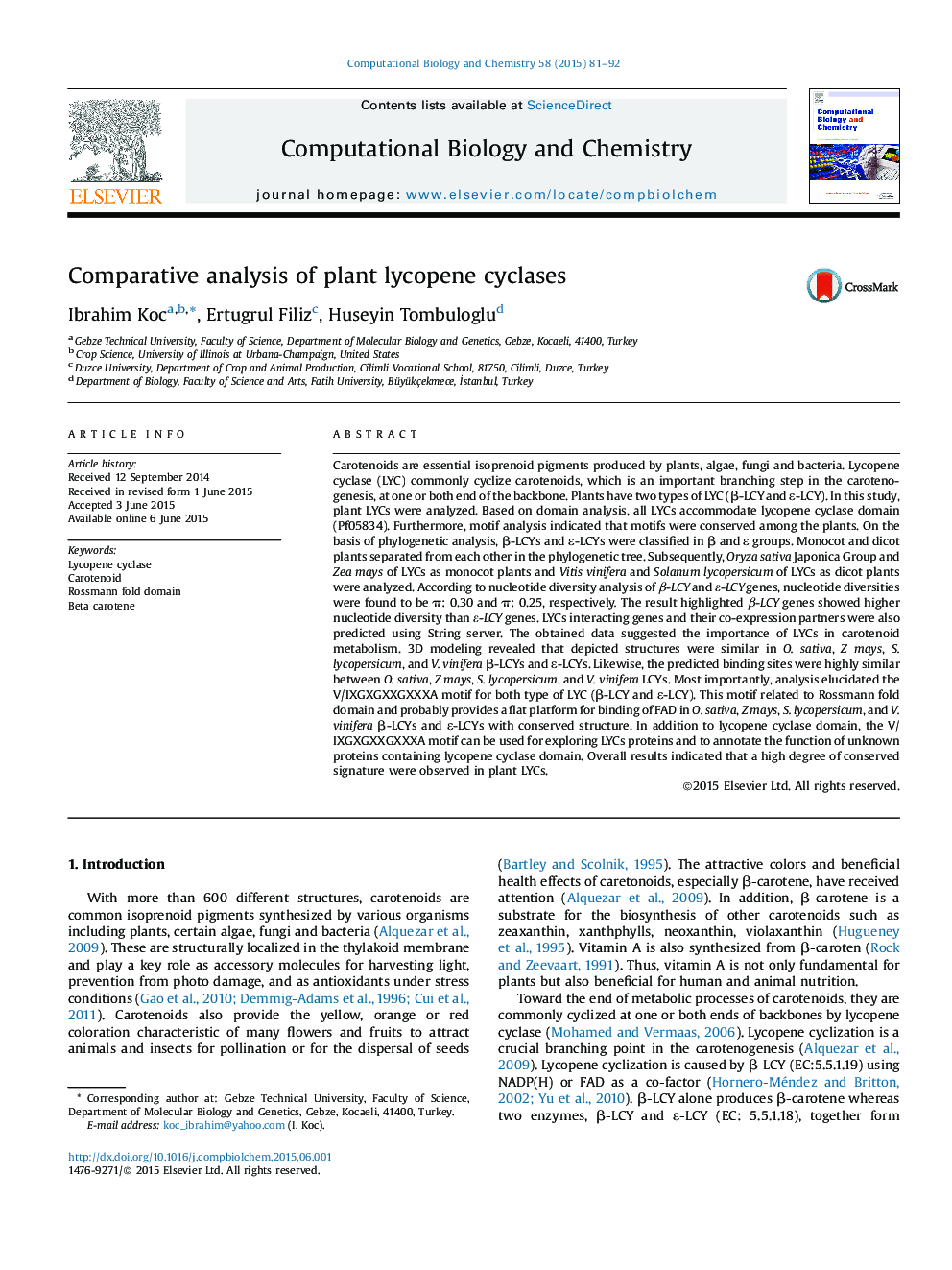| کد مقاله | کد نشریه | سال انتشار | مقاله انگلیسی | نسخه تمام متن |
|---|---|---|---|---|
| 15008 | 1367 | 2015 | 12 صفحه PDF | دانلود رایگان |
• Plants have two types of lycopene cyclase (β-LCY and ϵ-LCY).
• In this study, we analyzed plant lycopene cyclases (LYCs).
• Phylogenetic analysis revealed that β-LCYs and ϵ-LCYs were classified within β and ϵ groups.
• Sequence analysis also elucidated V/IXGXGXXGXXXA motif which is common for both type of LYC.
• In addition to lycopene cyclase domain, V/IXGXGXXGXXXA motif can be used for exploring LYCs proteins and to annotate the function of unknown proteins.
Carotenoids are essential isoprenoid pigments produced by plants, algae, fungi and bacteria. Lycopene cyclase (LYC) commonly cyclize carotenoids, which is an important branching step in the carotenogenesis, at one or both end of the backbone. Plants have two types of LYC (β-LCY and ϵ-LCY). In this study, plant LYCs were analyzed. Based on domain analysis, all LYCs accommodate lycopene cyclase domain (Pf05834). Furthermore, motif analysis indicated that motifs were conserved among the plants. On the basis of phylogenetic analysis, β-LCYs and ϵ-LCYs were classified in β and ϵ groups. Monocot and dicot plants separated from each other in the phylogenetic tree. Subsequently, Oryza sativa Japonica Group and Zea mays of LYCs as monocot plants and Vitis vinifera and Solanum lycopersicum of LYCs as dicot plants were analyzed. According to nucleotide diversity analysis of β-LCY and ϵ-LCY genes, nucleotide diversities were found to be π: 0.30 and π: 0.25, respectively. The result highlighted β-LCY genes showed higher nucleotide diversity than ϵ-LCY genes. LYCs interacting genes and their co-expression partners were also predicted using String server. The obtained data suggested the importance of LYCs in carotenoid metabolism. 3D modeling revealed that depicted structures were similar in O. sativa, Z mays, S. lycopersicum, and V. vinifera β-LCYs and ϵ-LCYs. Likewise, the predicted binding sites were highly similar between O. sativa, Z mays, S. lycopersicum, and V. vinifera LCYs. Most importantly, analysis elucidated the V/IXGXGXXGXXXA motif for both type of LYC (β-LCY and ϵ-LCY). This motif related to Rossmann fold domain and probably provides a flat platform for binding of FAD in O. sativa, Z mays, S. lycopersicum, and V. vinifera β-LCYs and ϵ-LCYs with conserved structure. In addition to lycopene cyclase domain, the V/IXGXGXXGXXXA motif can be used for exploring LYCs proteins and to annotate the function of unknown proteins containing lycopene cyclase domain. Overall results indicated that a high degree of conserved signature were observed in plant LYCs.
Figure optionsDownload as PowerPoint slide
Journal: Computational Biology and Chemistry - Volume 58, October 2015, Pages 81–92
